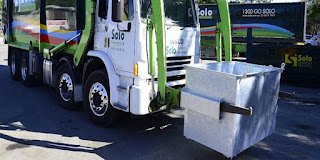Benefit from the Efficient and Environment-Friendly Paper Recycling Depot in Adelaide
Just like the recycling of other materials is important, it is important to recycle papers as well. Paper recycling Adelaide is important because it reduces greenhouse gases and their effects on the surrounding area. Paper recycling can also help to conserve natural resources. One of the most important benefits of paper recycling is that it saves landfill space; the more paper that is recycled, the less the need for recycling.
Adelaide
Waste and Recycling Centre ensures that the papers are recycled rather than
disposed of in the landfill, thereby reducing the pressure on the landfill and
the environment. The company provides efficient paper recycling Adelaide
solutions for all types of papers, including magazines, corrugated cardboard,
printer paper, packaging papers, newspaper, cardboard dairy and juice cartons,
phone books, and other items.
Paper
recycling helps to preserve forests by reducing the need to cut down trees to
make paper. It also reduces emissions and frees up landfill space for
non-recyclable materials.
Choose Adelaide Waste
and Recycling Centre for safe and effective paper recycling
Adelaide
Waste and Recycling Centre accepts all types of papers and processes them
through the specialised recycling depot Adelaide. The company's staff
are extremely trained and sort recyclable paper from general waste after
processing it in the depot, which treats both business and domestic waste. The
company provides cardboard recycling bins to businesses, and the crew is also
in charge of waste disposal and management. You can drop off your domestic
cardboard trash at the recycling depot Adelaide or schedule regular pick
up for your commercial cardboard waste at the Adelaide Waste and Recycling
Centre.
Procedure involved in
recycling paper in real-time
Paper
is classified into two grades based on its performance, raw materials, use,
appearance, and manufacturing history, for example: high-grade papers and
low-grade papers. High-grade papers include all official papers, coloured
ledger paper, and computer print-out papers. Low-quality papers, on the other
hand, include cardboard, newspapers, magazines, mixed office papers, paper
books, windowed envelopes, cards, and sticky notes.
Paper
recycling Adelaide is important for conserving energy, water,
and landfill space. Paper recycling has also been shown to reduce greenhouse
gas emissions, and recycled fibre is more sustainable, cost-effective, and
can be used to make new paper products.
Here
are some of the paper recycling steps that the Adelaide Waste and Recycling
Centre follows:
- Collection: To
begin the recycling process, individual users (homes, businesses,
institutions, and industrial firms) collect and store paper trash in bins.
The Adelaide Waste and Recycling Centre employee then gathers all of the
paper and places it in a large recycling bin.
- Sorting and Transportation: When the paper is collected, it is measured and graded for quality.
Waste paper of similar grades is merged because they have the same amount
of fibre that can be recovered from the pulp. The paper is then delivered
to an Adelaide recycling facility. When the paper arrives at the North
Plympton recycling depot, it is measured for quantity and quality
(cleanliness and type), and a purchase contract is issued to the company.
The recovered paper is then separated again based on its surface treatment
and structure.
- Shredding and Pulping: According to the paper
recycling Adelaide technique,
the paper is shredded after sorting to break down the material into small
bits. After the material has been finely shredded, a significant amount of
water is added along with additional chemicals such as hydrogen peroxide,
sodium hydroxide, and sodium silicate to break down and separate the
fibres of the paper. The resulting slurry solution, which has an
oatmeal consistency, is used to make pulp, which is then used to make
paper. The procedure entails converting recovered paper resources into
pulp. It is then filtered and centrifuged to remove larger impurities from
the recovered paper, such as paper clips, staples, tape, and plastic
films.
- Floatation Tank: After the larger pollutants have been removed,
the pulp is transferred to a flotation tank, where chemicals and air
bubbles remove colours and inks, increasing the purity and whiteness of
the product. If a white hue is desired, hydrogen peroxide and other
whitening chemicals can be used to achieve it. This phase bleaches the
pulp until it is ready for the final stage of processing.
- Drying: The pulp is then passed through rollers or a
vibrating machine to remove excess water, yielding a product that is 50%
water and 50% fibre. Additional virgin wood fibre can be added to the
pulp to increase the strength or smoothness of the paper. Finally, the
pulp is dried and processed for re-use based on its quality and
specifications.
You can
rely upon Adelaide Waste and Recycling Centre for paper recycling Adelaide solution and other efficient services like
tyre disposal, green waste disposal, recycling bin, industrial bin and rubbish
tip.



.jpg)
Comments
Post a Comment